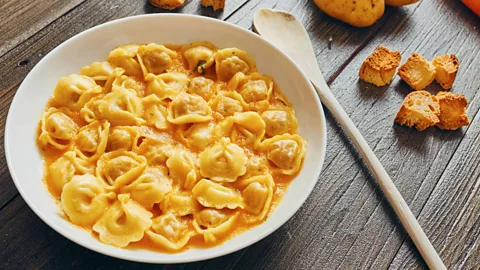The mystery of one of Italy's most iconic pastas
 Alamy
AlamyFor centuries, residents of Emilia-Romagna have disagreed about which of its two main cities invented tortellini, but the truth may be neither did.
I'm seated at the three-Michelin starred Osteria scana, and can't believe my luck. It's been eight years since I first attempted to snag a reservation at the coveted restaurant in Modena, Italy, helmed by Massimo Bottura, one of the world's most influential chefs. I've been to Italy nearly 50 times since 2016, and each visit, I prowl the restaurant's website, even setting alarms at odd hours, to no avail.
But one week ago, from my hotel in Tuscany, I saw a 12:30 lunch cancellation and pounced. And now I'm finally here, in a world of chic Gucci wallpaper and dim lighting, about to try the famous 15-course tasting menu for myself.
I'm savouring "Tortellini or Dumplings">window._taboola = window._taboola || []; _taboola.push({ mode: 'alternating-thumbnails-a', container: 'taboola-below-article', placement: 'Below Article', target_type: 'mix' });
